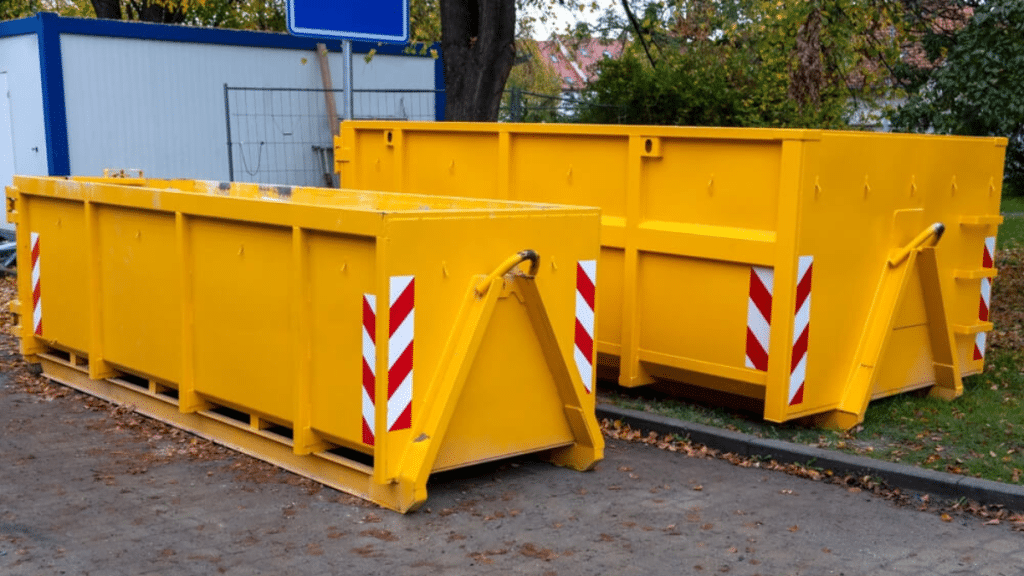Introduction
Renting a dumpster sounds simple—until you’re staring at a list of size options with no idea how many cubic yards of debris you’ll actually generate. Overestimating can lead to unnecessary costs, while underestimating might leave you with overflowing trash mid-project and needing another haul.
Choosing the right dumpster rental isn’t just about size—it’s about matching the container to the task at hand. Whether you’re doing a weekend garage cleanout or a full-scale home renovation, understanding the volume of waste your project will produce helps ensure an efficient and stress-free experience.
Here’s your guide to selecting the ideal roll off dumpster size based on real-world scenarios.
Understanding Dumpster Sizes: What Do the Numbers Mean?
Dumpster sizes are typically measured in cubic yards, which represents the volume the container can hold. A cubic yard is 3 feet long x 3 feet wide x 3 feet high. Common residential and commercial dumpster sizes include:
- 10-yard dumpster: Small-scale cleanouts and debris
- 15-yard dumpster: Light remodeling or heavy cleanouts
- 20-yard dumpster: Medium renovations or roofing jobs
- 30-yard dumpster: Large construction projects or major cleanouts
- 40-yard dumpster: Demolition, commercial debris, or large-scale events
Each project generates a unique mix of materials, so consider not just volume—but also the weight and type of debris.
Small Projects: 10-Yard Dumpsters
Perfect for:
- Garage or attic cleanouts
- Small landscaping projects
- Minor household decluttering
- Removing a single layer of roof shingles
A 10-yard dumpster is compact and ideal for tight spaces. It holds the equivalent of about 3 pickup truck loads of waste. This is a popular choice for weekend warriors tackling light disposal jobs or homeowners preparing for a move.
Pro tip: Avoid overfilling—materials must be level with the top edge for safe hauling.
Medium Projects: 15–20 Yard Dumpsters
Ideal for:
- Kitchen or bathroom renovations
- Small roof replacements (up to 30 squares)
- Flooring or carpet removal
- Fence or deck removal (up to 300 sq. ft.)
The 15-yard and 20-yard dumpsters are considered the “sweet spot” for many homeowners. A roll off dumpster of this size can typically hold 5–7 pickup truck loads of debris. It’s big enough to handle moderate waste but still compact enough to fit in most driveways.
Use case example: Tearing out old cabinets, appliances, and flooring from a mid-sized kitchen remodel? A 20-yard dumpster will likely serve you well.
Larger Renovations and Construction: 30-Yard Dumpsters
Designed for:
- Major home renovations
- Full basement or large garage cleanouts
- Home additions
- Roofing jobs with multiple layers
If you’re generating heavy materials like drywall, wood, or siding, a 30-yard dumpster rental provides the volume needed without the need for multiple hauls. These dumpsters can typically hold 9–10 pickup truck loads of debris.
Before choosing this size, check local placement rules—some neighborhoods have restrictions on large containers or may require permits for street placement.
Commercial Jobs and Demolition: 40-Yard Dumpsters
Reserved for:
- Commercial construction projects
- Full home demolitions
- Office or warehouse cleanouts
- Events generating bulky waste
The largest standard dumpster size, the 40-yard container, can handle up to 12 pickup truck loads of debris. It’s designed for volume and bulk—not for extremely dense or heavy materials like concrete or brick (which may exceed weight limits before filling up the space).
If you’re overseeing a commercial project, a 40-yard roll off dumpster minimizes downtime by reducing the need for multiple trips or frequent swaps.
Factors to Consider Beyond Volume
Choosing the right dumpster is about more than just size. Here are a few other things to think about:
1. Weight Limits
Every dumpster has a weight cap. Exceeding it can result in extra fees—even if you didn’t fill the container to the top. Heavy materials like dirt, asphalt, or shingles add up fast. Ask your dumpster rental provider about weight allowances for each size.
2. Space and Access
Can your driveway accommodate a 22-foot-long container? Will the delivery truck have room to drop it off and pick it up safely? Consider access to your site and potential obstacles like gates, trees, or low-hanging wires.
3. Rental Duration
The larger the project, the more time you may need. Make sure the rental period aligns with your timeline and ask about options for extensions or early pickups.
4. Local Regulations
Some municipalities require permits for placing a roll off dumpster on a public road or sidewalk. Check with your local office—or work with a provider who handles permitting.
How to Estimate Your Waste Volume
Still unsure how much debris your project will generate? A quick method is to visualize a standard pickup truck bed, which holds about 2 to 2.5 cubic yards. Estimate how many truckloads your project would require, then choose a dumpster size that covers the total—plus a little extra, just in case.
It’s always safer to size up. Underestimating can lead to added costs for overfilling or needing a second container, while the price difference between two sizes is often minimal.
Final Thoughts
Selecting the right dumpster rental in Jackson size doesn’t need to be a guessing game. It’s about aligning your project scope, material type, and space constraints with the container that fits best—physically and financially.
If you’re still unsure, reach out to a local provider like Delta Waste Solutions. With experience across residential and commercial projects, they can help assess your disposal needs and recommend the most efficient and cost-effective solution.
Choosing the right size the first time keeps your project on schedule, your site safe, and your budget intact.
